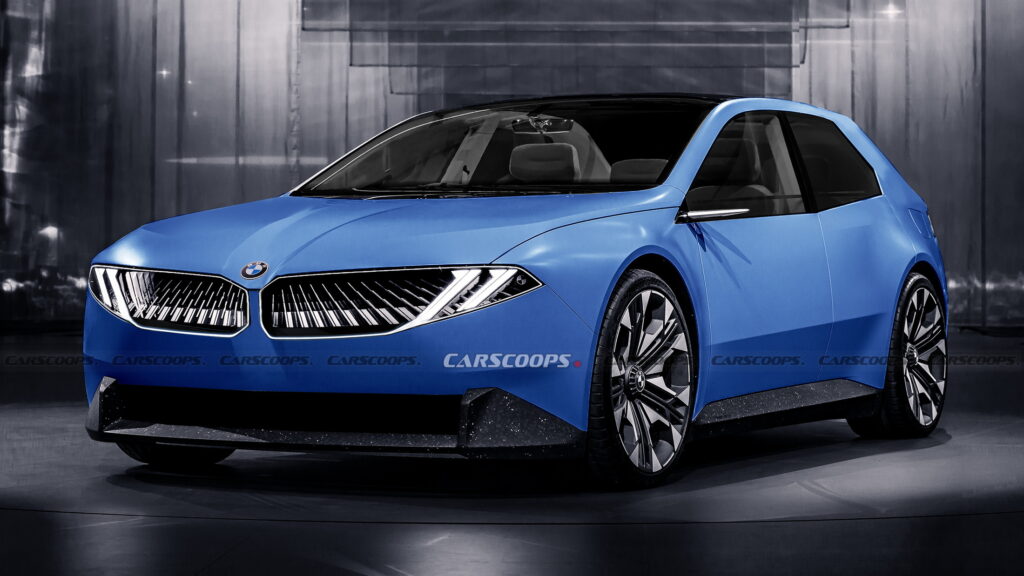Would You Really Pay $28K For A Crank Window EV With No Speakers?
- Jeff Bezos-backed Slate revealed its $28k modular EV yesterday.
- The bare-bones truck has manual windows and a 150-mile range.
- An optional truck top turns the two-seat pickup into an five-seat SUV.
With so many modern cars feeling like clones of each other, featuring similar designs and often identical powertrains, it’s only normal that we’d get excited when something really different comes along. But in the case of Slate’s new EV, is that lust for the new is at risk of creating a real Emperor’s New Clothes situation?
If you haven’t seen our report on the Slate’s debut you should check out our original story at the link below this paragraph. But here’s the tldr: Slate is Michigan-based startup backed by Amazon’s Jeff Bezos that wants to sell affordable electric utility vehicles.
They’ll cost from $27,500 ($20k after federal tax credits) and a modular design means you’ll be able to turn the two-seat truck into a two-row SUV or an SUV with a coupe back or open roof with an add-on pack.
Related: Slate Shakes Up EVs With $28,000 Pickup That Turns Into An SUV
Both of those are real selling points. Most of the few electric utilities around, like Rivian’s R1S and R1T and those coming soon from Scout, cost over $50k putting them out of the reach of many American buyers. It’s great to see an automaker building a simple, no-frills truck that doesn’t cost the earth and doesn’t take up two parking bays, and the ability to switch between pick-up and SUV configurations really adds to the practicality.
Small price, smaller equipment list
But a ton of compromises have been made to hit the sub-$30k price. Most obviously, the list of standard equipment makes a Dacia look like a Maybach. There’s no touchscreen – which is not necessarily a bad thing, because we’ve all got smartphones and it means you get physical rotary controls for the AC.
But there’s not even any kind of stereo/speakers fitted as standard to play music from your phone. They’re optional, along with the wrap you’ll need to apply to change the body color since there are no paint options because there’s no paint.
More: You Can Buy This Pickup For $4K Less Than Slate’s EV And You Don’t Even Have To Crank Your Windows
And the crank windows? The internet went wild over this, but it’s a classic case of “brown, manual, diesel wagon” syndrome, and the fun factor will quickly wear off the first time you need to yell to your kids that they forgot their lunch box at school drop-off, or ask someone for directions through the passenger window because you’ve got no phone signal for Google Maps and there’s no onboard nav.
The 1,000 lbs (545 kg) towing capacity is also terrible for a utility vehicle, the 5 ft (1.52 m) bed length’s 0.5 ft (150 mm) advantage over a Ford Maverick comes at the expense of rear seats, and the lack of an all-wheel drive variant hurts its appeal to those who live in rural areas or get harsh winters. And the smaller of the two available batteries only has a 52.7 kWh capacity and gives a range of just 150 miles (240 km).
Short battery range
That range might be fine for a truck that never strays far from its home city, but we know from Mazda’s MX-30 sales failure that people don’t like EVs that can’t go far on a charge. And though you can pay for a bigger 84.3 kWh pack that’ll give you 240 miles (386 km), that’s probably going to push you well north of $30k (before credits), and by the time you’ve added the SUV top, a wrap, Bluetooth speakers and other personalization options your bargain truck isn’t going to be quite as much of a bargain.
I really want to get behind the Slate. I hate that cars have become so heavy and overcomplicated and this feels like the wheeled equivalent of my Suri toothbrush, which doesn’t have any fancy functions you never need like stupid Bluetooth apps, but is well built and lasts for weeks on a charge. Slate’s focus on simplicity, only giving us the stuff we need and none of what we don’t is refreshing, and one other automakers constantly adding pointless gadgets to get our attention could learn from.
Will internet praise equal sales?
But as Toyota discovered with the GR86, there’s a big difference between getting a bunch of people excited about the idea of a simple, pure-of-spirit vehicle, and getting them to actually buy it. Once the Slate launch dust has settled and the novelty of the crank windows and very bare, very plasticky interior and configurable roof (where are you gonna store it?) has faded and the trucks are available to buy, will Americans open their wallets?
Or will they decide that it’s simply too compromised, too basic and there are better options for similar money.
And maybe for less money if the EV tax credits advantage disappears (it’s already not available to all buyers). Those other options, like the $24k Ford Maverick with an aftermarket Leer truck cap for that SUV feel, aren’t stylish like Slate’s Truck, and they’re not electric, but they’re great products. And is anyone in America really crying out for an electric pickup right now, anyway?
Slate thinks it’ll sell 150,000 every year, and we hope it does, but how do you rate its chances? Is it a credible truck and really the game-changing bargain some people are making it out to be, or is it just massively over-hyped, still too expensive and about five years too early? Leave a comment and let us know.











